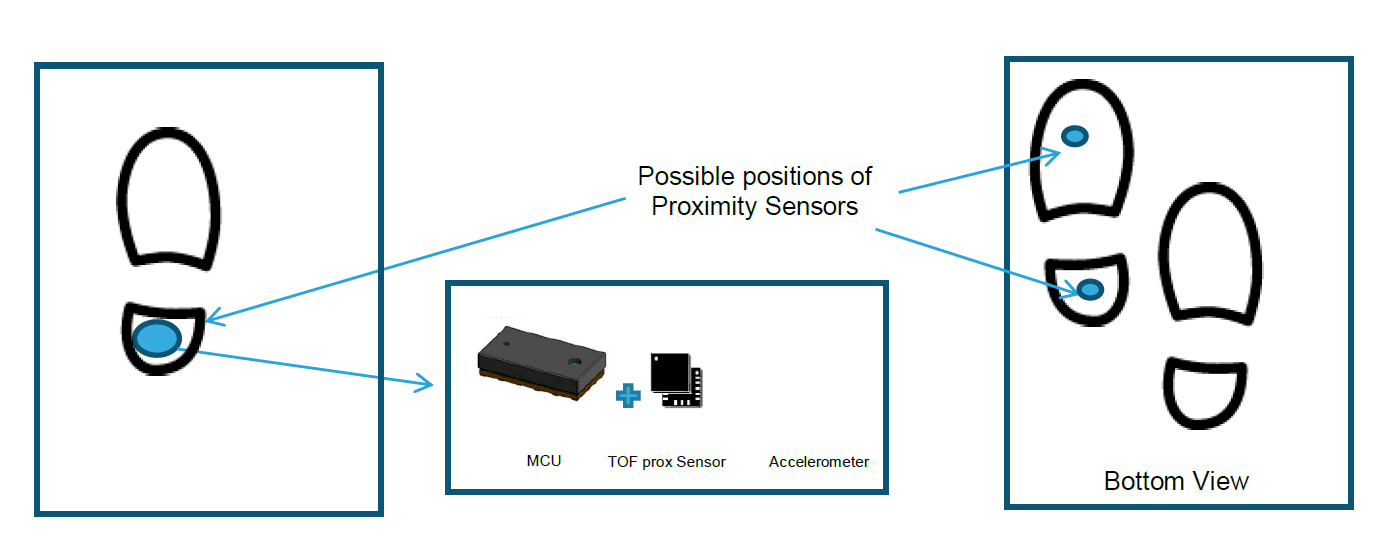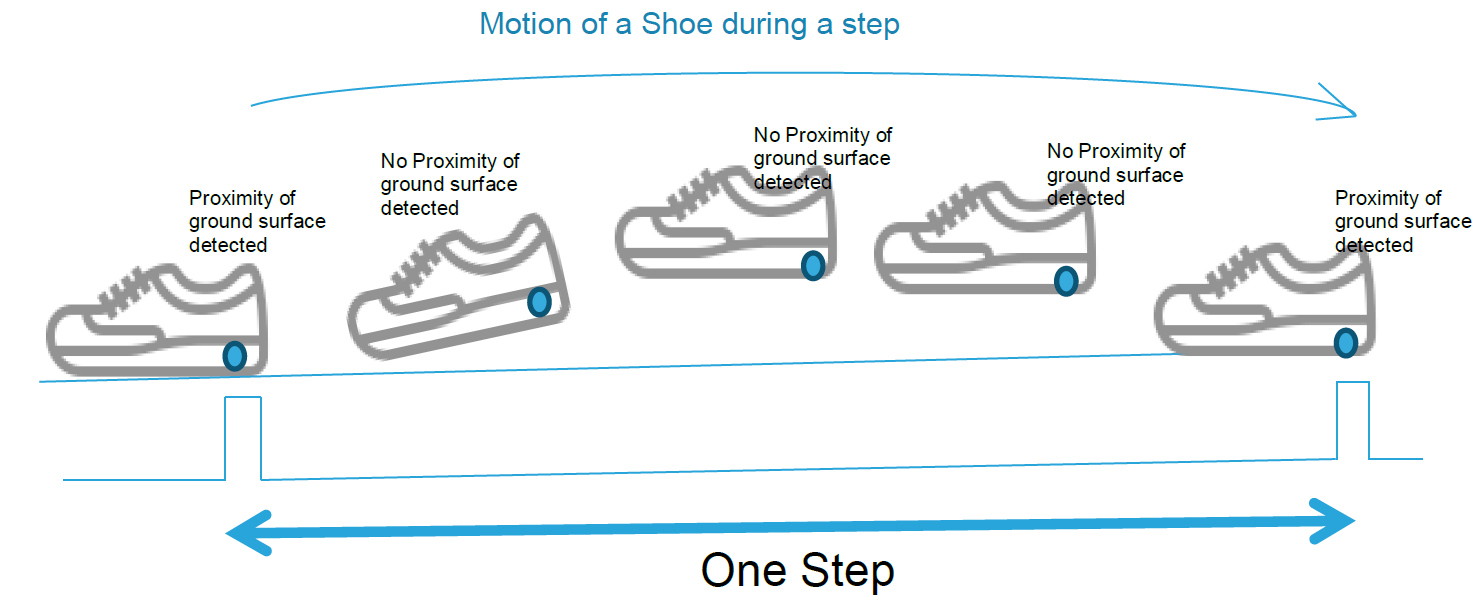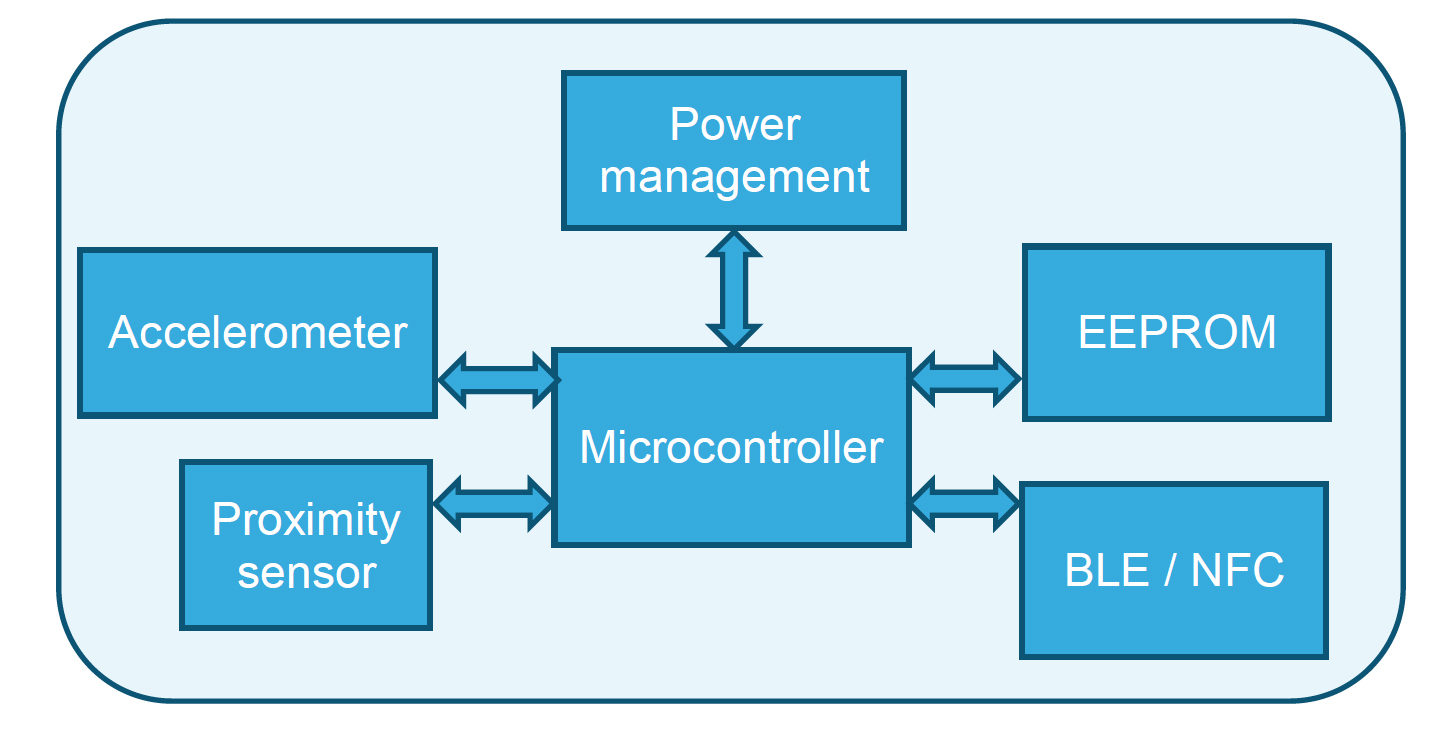Life is getting busy these days with a lifestyle where people are not much into physical exercise or activity. But thankfully health awareness has started inducing our mind to remain fit and healthy. And here, wearable gadgets like fuel bands and smart shoes are playing a vital role to keep an eye on your physical activity and encourage you to accomplish your daily quota of physical activity limits.
Pedometer or step counting mechanism is one of the best to provide aid in this field. Many designs with motion sensors like accelerometer are already popular in the market. Accelerometer based pedometer works using a bit complex algorithms along with real case data profiling. Without a robust algorithm there could be chance of false detection of steps for accelerometer based pedometer. Proximity sensor could be a good add-on option which can be integrated with a smart shoe to detect step counts quite in a simpler and reliable way.

The Proximity sensor (could be a TOF: Time of Flight one), accelerometer and the MCU (Microcontroller unit) with BLE (Bluetooth Low Energy)could be mounted on the bottom of the footwear in a protective slot with the sensing portion facing the ground. Each step will be filtered out from the proximity sensor values at a given rate by the firmware running in the MCU. System can provide an interface – BLE for outputting the data to a console device (handheld or PC). We can have two proximity sensor in a single footwear for better step detection and counting. One proximity sensor on the sole of footwear will be sufficient to detect a step. But to have more reliable detection of steps, we can have two proximity sensors in single footwear as shown in the figure1.
In figure 2 the motion of a shoe has been depicted along with the step detection using a proximity sensor. Proximity to ground surface can be detected very easily during a step. Here the role of the accelerometer is to detect the motion. So, when there is motion detected by accelerometer, proximity sensor will ensure the step detection. In this case, accelerometer will filter out the static tapping of the shoes. When the user is at one place and just tapping the foot on the ground, it will not be detected as steps, since there is no motion detected by accelerometer in the forward direction.


Hence in this mechanism, we may not require a complex pedometer algorithm but yet we can have reliable step count. The robustness of this solution relies on the described compensation methodology between proximity sensor and accelerometer.
The parameter like distance travelled and calories burnt can be calculated using standard method. Distance can be measured using the step length and no. of steps. Step length could be retrieved from the height of the person. And the calories burnt could be calculated using the weight of the person, total time of the activity and the calorie constant values.
A low power microcontroller (STM32L0) along with the accelerometer (LIS3DH) and proximity sensor (Time of Flight: VL53L0X) will be the bare minimum necessity for a system like this. Power management section will handle the battery recharging circuit. The data could be stored in an EEPROM (M24LR) interfaced with the MCU which can be retrieved by an NFC enabled Phone or can be transmitted to the PC or hand-held device periodically via Bluetooth low energy (ST’s BlueNRG). User can sync the data any time by enabling the NFC or BLE on the handheld device. The electronics of this system can be encapsulated into a water proof casing and can be fit into customized slot in the shoe sole. User can reuse the electronic part of this system and plug on other shoes with similar customized slot on the sole.
Smart shoes with accelerometer and proximity sensor can be an efficient, unique and cost effective way to track the daily activity for a useful guidance to maintain a healthy lifestyle.
Authors








